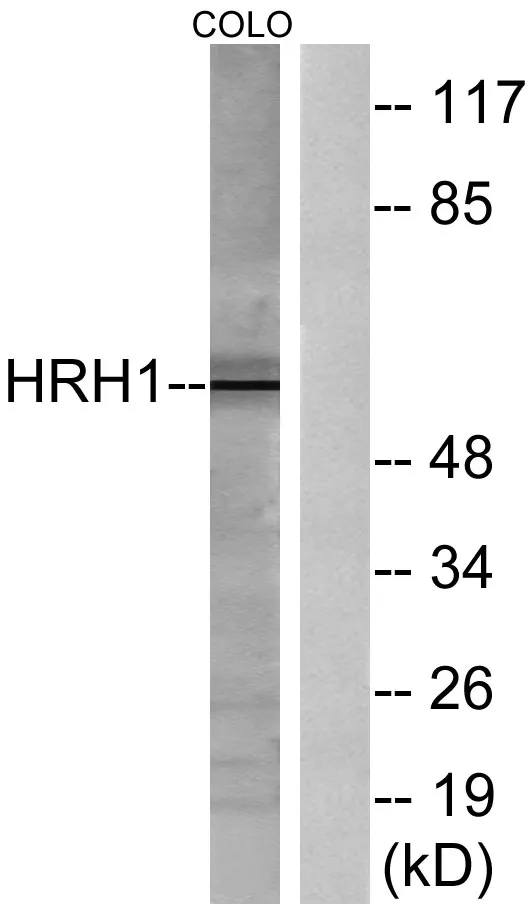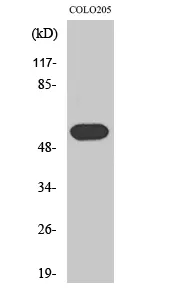


Size:50μL Price:$118
Size:100μL Price:$220
Size:200μL Price:$380
Application:WB,ICC/IF,ELISA
Reactivity:Human,Rat,Mouse
Conjugate:Unconjugated
Optional conjugates: Biotin, FITC (free of charge). See other 26 conjugates.
Gene Name:HRH1
Summary
| Production Name | Histamine H1 Receptor Rabbit Polyclonal Antibody |
| Description | Rabbit polyclonal Antibody |
| Host | Rabbit |
| Application | WB,ICC/IF,ELISA |
| Reactivity | Human,Rat,Mouse |
Performance
| Conjugation | Unconjugated |
| Modification | Unmodified |
| Isotype | IgG |
| Clonality | Polyclonal |
| Form | Liquid |
| Storage | Store at 4°C short term. Aliquot and store at -20°C long term. Avoid freeze/thaw cycles. |
| Buffer | Liquid in PBS containing 50% glycerol, 0.5% protective protein and 0.02% New type preservative N. |
| Purification | Affinity purification |
Immunogen
| Gene Name | HRH1 |
| Alternative Names | HRH1; Histamine H1 receptor; H1R; HH1R |
| Gene ID | 3269 |
| SwissProt ID | P35367 |
Application
| Dilution Ratio | WB 1:500-1:2000,ICC/IF 1:200-1:1000,ELISA 1:5000-1:20000 |
| Molecular Weight | 60kDa |
Background
Histamine is a ubiquitous messenger molecule released from mast cells, enterochromaffin-like cells, and neurons. Its various actions are mediated by histamine receptors H1, H2, H3 and H4. The protein encoded by this gene is an integral membrane protein and belongs to the G protein-coupled receptor superfamily. It mediates the contraction of smooth muscles, the increase in capillary permeability due to contraction of terminal venules, the release of catecholamine from adrenal medulla, and neurotransmission in the central nervous system. It has been associated with multiple processes, including memory and learning, circadian rhythm, and thermoregulation. It is also known to contribute to the pathophysiology of allergic diseases such as atopic dermatitis, asthma, anaphylaxis and allergic rhinitis. Multiple alternatively spliced variants, encoding the same protein, have been identified. [provided by Reffunction:In peripheral tissues, the H1 subclass of histamine receptors mediates the contraction of smooth muscles, increase in capillary permeability due to contraction of terminal venules, and catecholamine release from adrenal medulla, as well as mediating neurotransmission in the central nervous system.,PTM:Potential sites of phosphorylation in the third cytoplasmic loop may play an important role in regulating signal transduction through the receptor molecule.,similarity:Belongs to the G-protein coupled receptor 1 family.,
Research Area
Calcium;Neuroactive ligand-receptor interaction;
